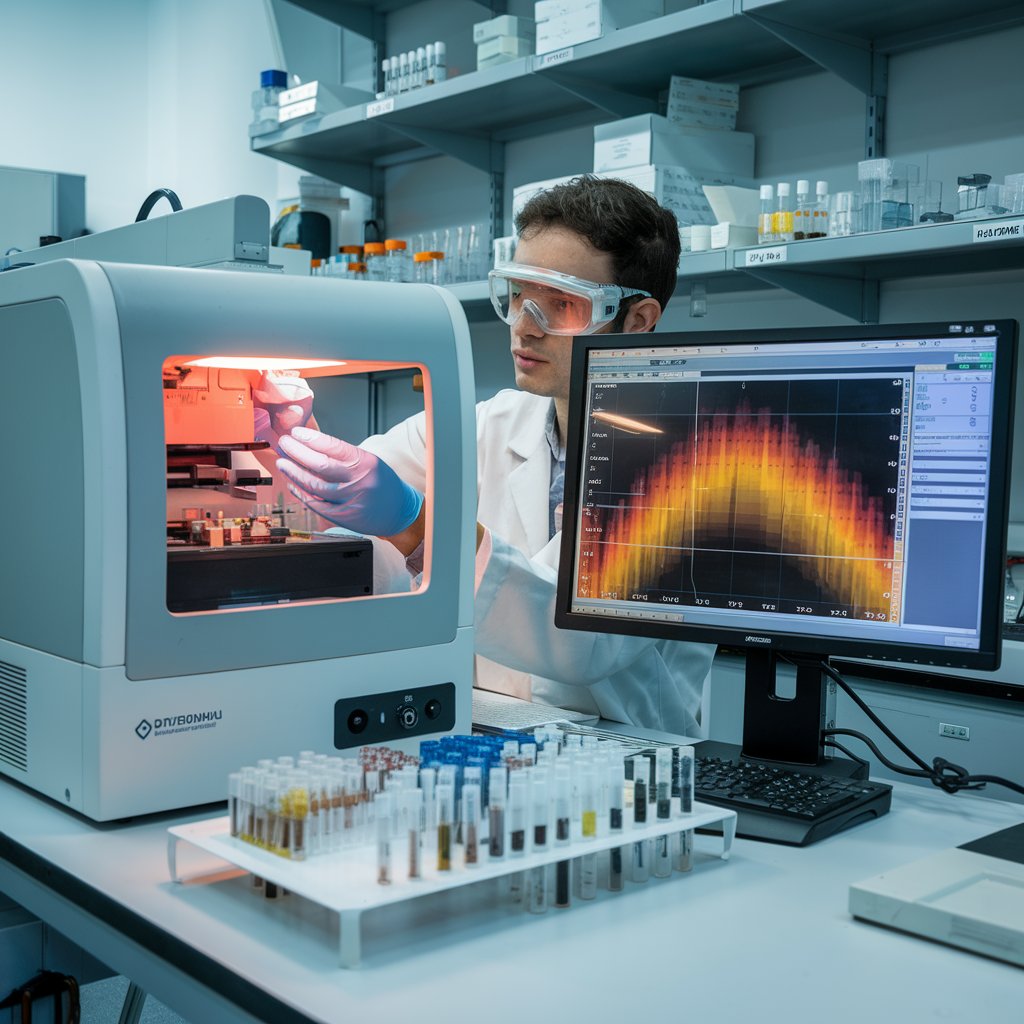Infrared (IR) spectroscopy is a powerful analytical technique that leverages the interaction between infrared radiation and matter to provide critical information about molecular structures and compositions. By measuring how a sample absorbs infrared light at different wavelengths, researchers can gain insights into functional groups, molecular dynamics, and interactions. Below, we delve deeper into the applications of IR spectroscopy across various industries, highlighting its significance, methodologies, and advancements.
Infrared (IR) spectroscopy industry growth :
The global IR spectroscopy market was valued at USD 1.2 billion in 2024 and is projected to reach USD 1.6 billion by 2029; it is expected to register a CAGR of 6.5% during the forecast period The rise in demand for IR spectroscopy systems is attributed to the growth in the number of healthcare institutions and clinical research centers, increase in R&D investments in healthcare and pharmaceuticals industry, and continuous technological advancements in IR spectroscopy.
Infrared (IR) spectroscopy has become a vital analytical tool across various sectors, including pharmaceuticals, food safety, environmental monitoring, and materials science. With rapid advancements in technology, the IR spectroscopy industry is undergoing significant transformations. This article explores the key innovations in IR spectroscopy equipment, software solutions, the integration of artificial intelligence (AI) and machine learning, the rise of portable and handheld devices, and the overall impact of these advancements on market growth.
Technological Advancements in the IR Spectroscopy Industry
Innovations in IR Spectroscopy Equipment
Recent innovations in IR spectroscopy equipment have led to enhanced performance, accuracy, and versatility. Key advancements include:
Fourier Transform Infrared Spectroscopy (FTIR): FTIR has revolutionized IR spectroscopy by providing higher resolution and faster data acquisition. Modern FTIR spectrometers are equipped with advanced interferometers and detectors that improve sensitivity and allow for detailed molecular analysis.
Miniaturization: The development of compact IR spectrometers has made sophisticated analysis more accessible. These miniaturized devices retain high performance while being more affordable and user-friendly.
Hyphenated Techniques: Innovations such as IR coupled with techniques like gas chromatography (GC-IR) and liquid chromatography (LC-IR) enable comprehensive analysis of complex mixtures. This allows for more detailed characterization and identification of compounds.
Download PDF Brochure @
https://www.marketsandmarkets.com/pdfdownloadNew.asp?id=42486905

Software Solutions for IR Spectroscopy
Software advancements have significantly enhanced the capabilities of future of IR spectroscopy, enabling more efficient data analysis and interpretation:
Spectral Analysis Software: Modern software tools offer sophisticated algorithms for spectral interpretation, making it easier for users to analyze and identify compounds quickly. This software can provide features like peak assignment, quantitative analysis, and comparison with reference databases.
Cloud-Based Solutions: The shift towards cloud computing allows for centralized data storage and analysis. Researchers can access large spectral databases and collaborate more efficiently, promoting knowledge sharing and innovation.
Integration with Laboratory Information Management Systems (LIMS): Software that integrates IR spectroscopy with LIMS streamlines workflows, enhances data management, and improves regulatory compliance. This integration ensures that spectral data is easily accessible for quality control and research purposes.
Integration of AI and Machine Learning
The incorporation of artificial intelligence and machine learning into IR spectroscopy represents a groundbreaking advancement:
Data Interpretation: AI algorithms can analyze complex spectral data more quickly and accurately than traditional methods. Machine learning models can be trained to recognize patterns in spectra, improving compound identification and quantification.
Predictive Modeling: AI can assist in predictive modeling by correlating spectral data with physical and chemical properties. This capability can accelerate the discovery of new materials and compounds in research and development.
Automation: The integration of AI enhances automation in spectroscopy, enabling real-time data acquisition and analysis. Automated systems can optimize experimental conditions and provide immediate feedback, significantly improving efficiency.
Portable and Handheld IR Spectrometers
The emergence of portable and handheld IR spectrometers has transformed how spectroscopy is utilized in various fields:
Field Applications: These devices allow for on-site analysis in environmental monitoring, food safety, and agriculture, making it easier to obtain immediate results without the need for laboratory infrastructure.
User-Friendly Design: Modern handheld spectrometers are designed for ease of use, often requiring minimal training. This accessibility broadens the user base beyond highly specialized scientists to include professionals in IR spectroscopy various industries.
Real-Time Monitoring: The ability to conduct real-time monitoring of chemical compositions enhances decision-making processes in quality control and environmental assessments.
Impact of Technological Advancements on Market Growth
The technological advancements in IR spectroscopy are driving significant growth in the market:
Increased Demand Across Industries: As industries recognize the value of advanced IR spectroscopy techniques for quality control, research, and compliance, the demand for these technologies continues to rise.
Enhanced Research and Development: Innovations enable faster and more accurate research, leading to breakthroughs in various fields, from pharmaceuticals to materials science. This drives investment in spectroscopy technology and associated research.
Global Market Expansion: The growth of industries such as biotechnology, food and beverage, and environmental science contributes to the expansion of the IR spectroscopy market. Emerging markets are increasingly adopting these technologies, further fueling growth.
Sustainability Initiatives: Advances in IR spectroscopy industry align with global sustainability goals by providing efficient methods for monitoring environmental pollutants and improving the safety and quality of food products.
Technological advancements in IR spectroscopy are reshaping the landscape of analytical chemistry. Innovations in equipment, software solutions, and the integration of AI and machine learning are enhancing the capabilities of IR spectroscopy, making it more accessible and efficient. The rise of portable spectrometers further broadens the application of this technique in real-world settings. As these advancements continue to drive market growth, IR spectroscopy will remain a pivotal tool in research, quality control, and environmental monitoring, supporting innovation across various industries.
